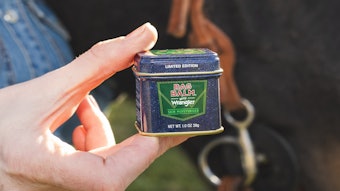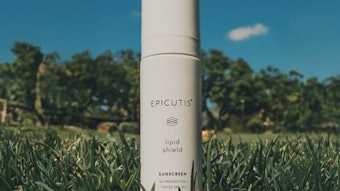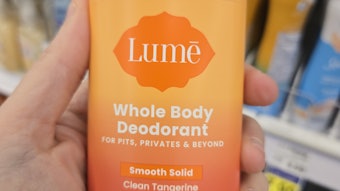
Read the full article in the May 2021 digital edition. . .
The microbiome is the complete genetic content of all microorganisms living in a particular environment. This can be on or in a specific body site, such as the gut, skin or underarm area. Skin, in particular, is the largest organ of the body and contains a variety of bacteria, fungi and viruses that comprise the skin microbiota.
Gathering data to generate or support a certain mechanism of microbial action in the human skin has proven difficult. To perform a skin microbiome analysis, scientists must first identify a marker of “healthy” skin, then follow the desired criteria for age, gender, race/ethnicity, diet and cosmetic usage since all of these variables impact the microbial genes within the host. In addition, there are generally four types of microenvironments that human skin may experience: normal, dry, oily and combination, and each condition is likely to be most suited for one or more of three essential types of ingredients to boost the skin microbiome; i.e., prebiotics, probiotics and postbiotics. Today, more cosmetic companies seek to develop qualified raw materials and products to balance the skin microbiome. As such, this article explores current challenges and approaches of doing such, and looks ahead to future areas of development for this field. It also provides an abbreviated market survey of ingredients and products focused on the human skin microbiome.
Microbiome, Microbiota and Data Impact Factors
Common approaches to formulations targeting the skin microbiome are products that nurture it or are microbiome-friendly; i.e., they do not alter or remove it. In relation, microbiome and microbiota are popular buzzwords used in advertisements and on product labels. Although these words are sometimes used interchangeably, their meanings are not the same.
The microbiome is the complete genetic content of all microorganisms living in a particular environment.1 This can be a specific site on or in the body, such as the underarm area. The Human Microbiome Project further breaks the microbiome down into a core human microbiome and a variable human microbiome.2 Here, a core microbiome is the set of genes present in the majority of humans and a variable microbiome is the set of genes located in a smaller subset of humans. Depending on the given habitat, each set of genes functions differently. For instance, the Streptococcus species is abundant in the oral cavity, whereas the Bacteroides species lives in the gut flora.
Microbiota refers to the complete community of microorganisms living in an environment such as underarms, eyelashes, scalp and intimate areas.1 These organisms are easily affected by internal and external factors, such as host genotype, physiological status, lifestyle and environment. The skin being the largest organ, it contains a wide variety of bacteria, fungi and viruses in its microbiota.3
Researchers continuously look at both the microbiome and microbiota for healthy versus impaired effects in skin. The action of data-gathering in this respect is quite difficult due to the distinction of the human skin microbiome. To perform a skin microbiome analysis, as noted, scientists must first identify what healthy skin is by assessing a skin microbial diversity that has never been touched by modern antibiotics, steroids, cosmetics or civilization. Then, they must establish a minimum diversity level below which they can state that skin is “unhealthy” or damaged.4, 5 Consistent data collection including age, sex, race/ethnicity and diet is critical to gathering a reliable result.
In addition, air humidity and skin moisture may be involved in microorganism quantification. In relation, studies also have concluded that the optimal temperature for the growth of microbial traits is between 33.2°C–35.0°C,6, 7 which is close to the skin’s surface temperature. Other criteria include test panelists strictly following protocols such as using the assigned products only or foregoing makeup, moisturizers or hand sanitizers on the sampling area since these parameters influence the skin microbiome genetic content in the host. The use of antibiotics, deodorants or emollients also can influence the analysis.4
The human skin has up to 1 billion microorganisms per square centimeter, which maintains the skin’s immunity and inhibits the growth of pathogenic microorganisms. Different types and quantities of these natural bacteria, fungi and viruses are specified based on the host’s genetics, age, gender, diet, hygiene and environmental factors. Studies have found, for example, that younger human adults, ages 25 to 35, have a more diverse microbiome than the elderly or adolescents.8, 9 Their microbiome also utilizes most of the carbohydrates, lipids, proteins and minerals present, and enhances the skin’s ability to hold moisture. Another study found that physiological and biochemical differences between males and females heavily influence microbial intervention; particularly hormone levels, facial and body hair, sebum, skin thickness, skin tone and healing properties.9 Examples of commensal species identified that prevented pathogenic growth and stabilized the skin microbiota included: Propionibacteriaceae acnes, Staphylococcus epidermidis and Staphylococcus capitis (S. capitis).
Skin Type Considerations
Beyond the microbiome itself are skin type considerations, which can influence the nutrients available to microbiota, and therefore, the microbiome community. Based on genetic conditions and external factors, human skin can be classified by four major types: normal, dry, oily and combination. Normal refers to skin with fine pores, a velvety and smooth texture and no blemishes; and it generally is not prone to sensitivity. In other words, normal skin could be considered to have the most stable and well-balanced microenvironment. Dry skin, in contrast, may appear rough and malnourished. This condition indicates a weakened barrier function, a shortfall of lipids and an increase in transepidermal water loss.
Contrary to dry skin, in oily skin, consumers experience sebum overproduction and may present with visibly enlarged pores, which some dermatologists attribute to genetics, hormonal changes or comedogenic cosmetics. Oily skin can also be more prone to acne, especially in the T-zone facial region. Combination skin, as the name suggests, exhibits one or more of these three types; most commonly oily/normal or normal/dry. Here, the microbial communities are the most complex. A combination-skin consumer can expect his/her microenvironment to have a low level of lipids, resulting in roughness, dullness and uneven texture, yet limited transepidermal water loss.10
. . .Read more in the May 2021 digital edition. . .
References
- Meyer, I., Sperring, S. and King, J. (2020, Apr 29). Inspiring innovation: Microbiome & sensitive skin. Cosmeticsdesign.com. https://www.cosmeticsdesign.com/Product-innovations/INSPIRING-INNOVATION-Microbiome-Sensitive-Skin.
- Turnbaugh, P.J., Ley, R.E., Hamady, M., Fraser-Liggett, C.M., Knight, R. and Gordon, J.I. (2007, Oct 17). The human microbiome project. Nature 449 804-810. https://www.nature.com/articles/nature06244
- Deckner, G. (2020, Mar 20). Microbiome skincare. Prospector Knowledge Center. https://knowledge.ulprospector.com/10321/pcc-microbiome-skincare/
- Wallen-Russell, C. and Wallen-Russell, S. (2017). Meta analysis of skin microbiome: New link between skin microbiota diversity and skin health with proposal to use this as a future mechanism to determine whether cosmetic products damage the skin. Cosmetics 4(2) 1-19. https://www.mdpi.com/2079-9284/4/2/14
- Wallen-Russell, C. (2018). The role of every-day cosmetics in altering the skin microbiome: A study using biodiversity. Cosmetics 6(1). https://www.mdpi.com/2079-9284/6/1/2
- Bewick, S., et al. (2019, Jul 5). Trait-based analysis of the human skin microbiome. Microbiome 7(1). https://microbiomejournal.biomedcentral.com/articles/10.1186/s40168-019-0698-2
- Dréno, B., et al (2016, Oct 13). Microbiome in healthy skin, update for dermatologists. Eur Acad Dermatol Venereol JEADV 30(12) 2038-2047. https://pubmed.ncbi.nlm.nih.gov/27735094/
- Ying, S., et al. (2015, Oct 28). The influence of age and gender on skin-associated microbial communities in urban and rural human populations. PloS One 10(10). https://journals.plos.org/plosone/article?id=10.1371/journal.pone.0141842
- Giacomoni, P.U., Mammone, T. and Teri, M. (2009). Gender-linked differences in human skin. J Dermatol Sci 55(3) 144-149. https://journals.plos.org/plosone/article?id=10.1371/journal.pone.0141842
- Understanding skin—skin types and conditions. Eucerin. Available at: https://int.eucerin.com/about-skin/basic-skin-knowledge/skin-types











